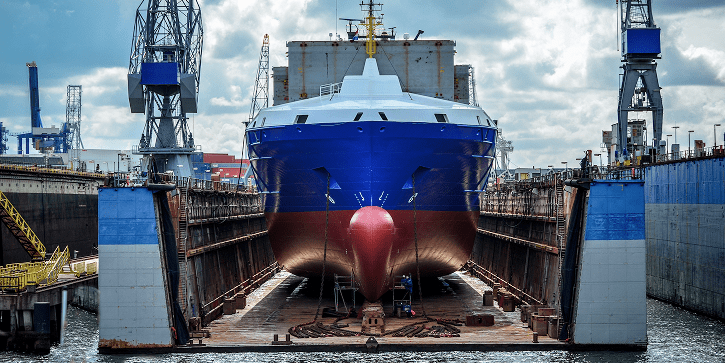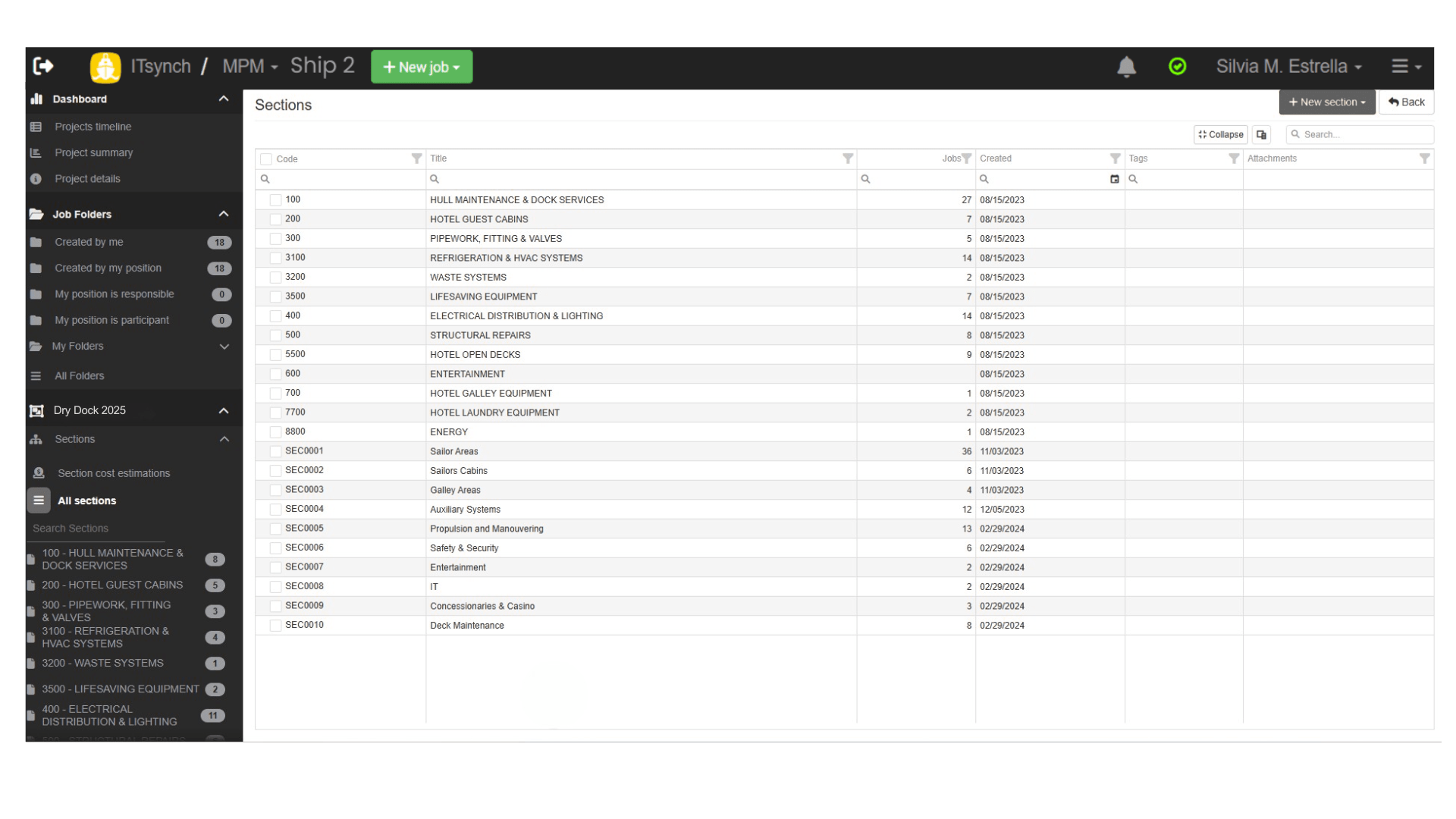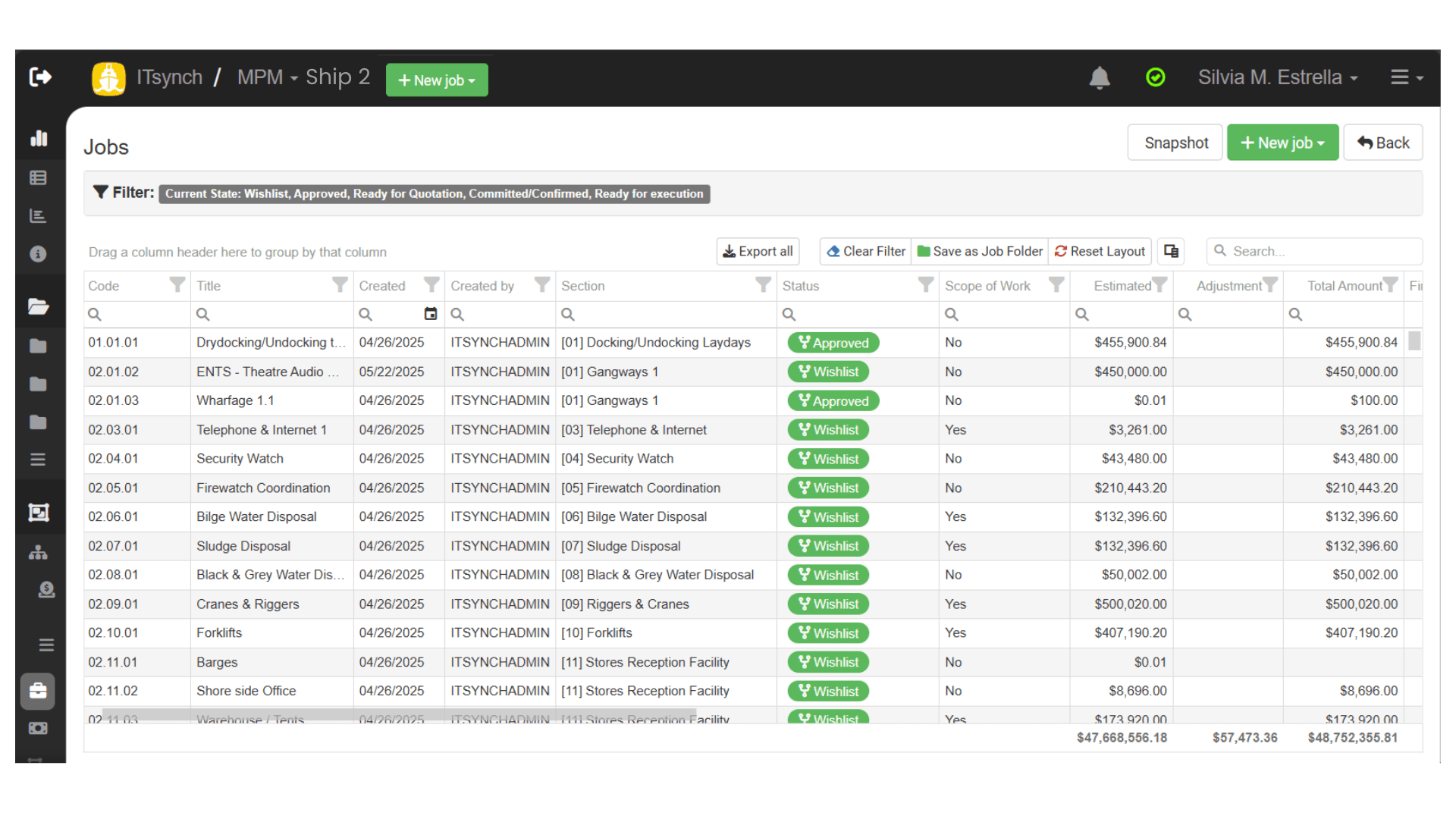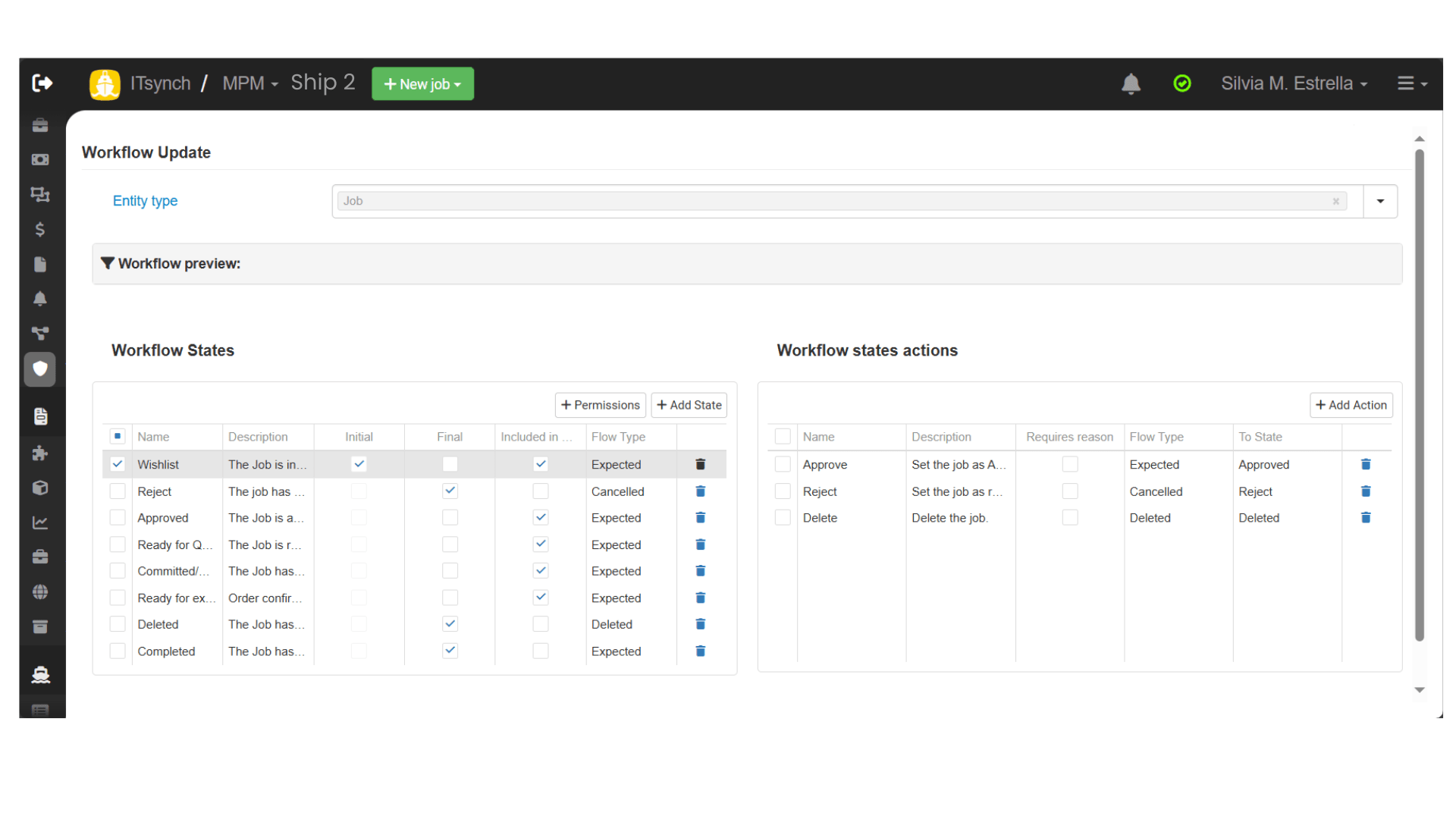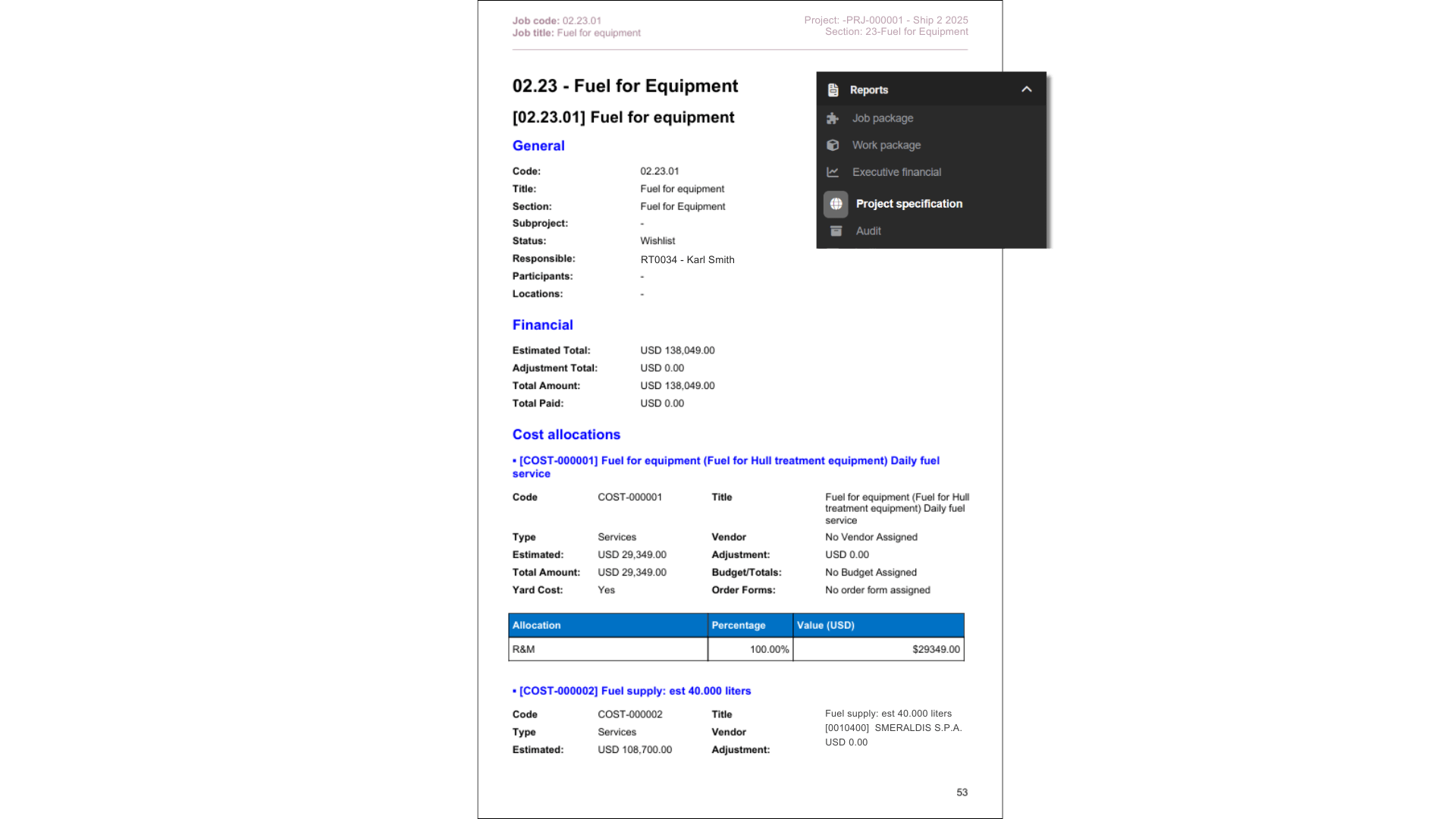
What is MPM?
MPM is designed to centrally manage maritime projects, specialized for dry docking, enabling different users from different departments to work collaboratively anytime from anywhere.
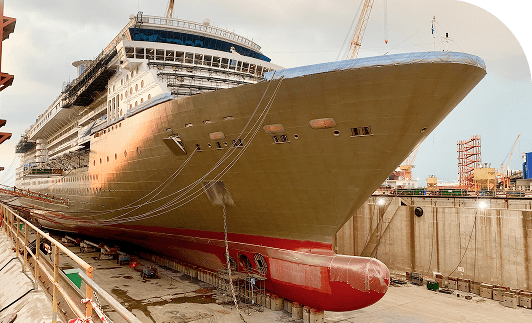
MPM’s Primary Goal
Serving as the central hub for all project-related information, MPM’s main goal is to enable internal and external, onboard and ashore, to collaborate using a standard approach to deliver projects efficiently, on time, and on budget.
Key Benefits
MPM delivers tangible value across every phase of your dry dock operations.
Collaborative Execution
Unifies ship, shore, and vendors to streamline dry dock projects with real-time communication.
Standardized Business Processes
Ensures consistency across teams and projects with configurable workflows.
Shared Data
No duplication; a single source of truth across all systems with intelligent replication.
Real-Time Visibility
Track execution progress, change orders, and logistics in real time, reducing delays.
Smarter Planning
Auto-loads prior project data and standardizes job planning, cost allocation, and documentation.
Full Third-Party Integration
Seamless interoperability with existing tools and platforms like ERP-legacy system and AIMS.
MPM Features Deep Dive
Projects Sections Management
Project sections (categories or chapters) provide a grouping method to organize project jobs with cost estimation and tracking capabilities.
Project Templates
Build and manage templates for projects, sections, and jobs to ensure consistency and speed up deployment.
Hierarchical Organization
Organize jobs into sections and subsections with job counters per section.
Cost Estimation
Financial users can estimate and track current expenditure for each budget bucket.
Search & Navigation
Advanced search capabilities and intuitive navigation through project structure.
Tags System
Organize visually and trigger automated actions with tags to enhance workflows.
Job Management System
A job in MPM is the smallest unit of work in a project. Jobs can be created from scratch, copied from previous projects, generated from templates, or imported from external sources.
Multiple Creation Methods
Custom jobs, copy from previous projects, predefined templates, shipboard requests, ERP-legacy system work orders.
Comprehensive Job Information
Main information, planning details, scope of work, financial tracking, and workflow status.
Cost Management
Summarized costs in project currency with detailed grid for cost and yard cost audits.
Custom Fields
Create fields for any record type, including text, numbers, dates, options, checkboxes, and currency.
Notes & Comments
Add notes to any record; require comments for changes to preserve context and rationale.
Configurable Workflow Engine
MPM provides a fully configurable workflow engine that allows system administrators to define policies at system or record level with different states and required fields.
Custom Workflow States
Define custom states, transitions, and approval processes for each project type.
Audit Trail
Complete audit trail tracking who made changes, when, and what was modified.
Security Policies
Record and field-level security for individual users or groups with role-based access.
User Interface
Search-as-you-type dropdowns, instant search, Excel export, and hierarchical tree selectors.
Advance Reporting & Analytics
Comprehensive reporting system with dynamic data extraction, scheduling capabilities, and automated distribution to stakeholders.
Dynamic Reports
Extract information from jobs, sections, and entire projects including financial and maintenance data.
Automated
Schedule reports to be sent regularly (monthly, weekly, daily) to defined users and recipients.
Project Dashboards
Quick status checks for different projects across the entire fleet from shoreside application.
Integrated Suite of Additional Applications
Full visibility, operational control, and informed decision-making across the dry docking process.
